Hoya Bella is a beautiful flowering epiphytic vine. It grows long narrow waxy leaves and has sweet smelling flowers. This semi succulent plant loves the light. It grows best with Bright direct light or strong bright indirect light.
It is also commonly labeled as the wax plant and Porcelain plant in shops.
The Bella is a flowering plant in the dogbane family Apocynaceae. Hoyas are native to the sub tropical jungles of Eastern Asia, Australia and some areas of the Phillipines.
These plants were originally named by horticulture expert Thomas Hoym in the 18th century.
It’s a popular and common plant. This Hoya is cultivated for greenhouse and houseplant growing. I’m sure you’ve seen this plant in your local plant shop.
The Hoya carnosa is available in several cultivations including variegations like the Krimson Queen.
The leaves are rather thick and waxy which gives the plant some drought protection. Watering the Hoya Bella correctly is the biggest challenge for caring for this plant.
Once you know how to grow these epiphytes they make great plants for the home or office. They love to trail but can easily be trellised as well.
If you over or under water the Bella its leaves will yellow and fall off. The wax plant enjoys a moist well drained soil but cannot tolerate heavy waterlogged soil.
Care for this plant like other sub tropical epiphytes. This vine prefers strong indirect light and some direct light. It will grow to about 4 feet long or longer indoors.
The perfect length for a houseplant. And it gives you sweet smelling flowers.
Shop Hoya Bella On Etsy!
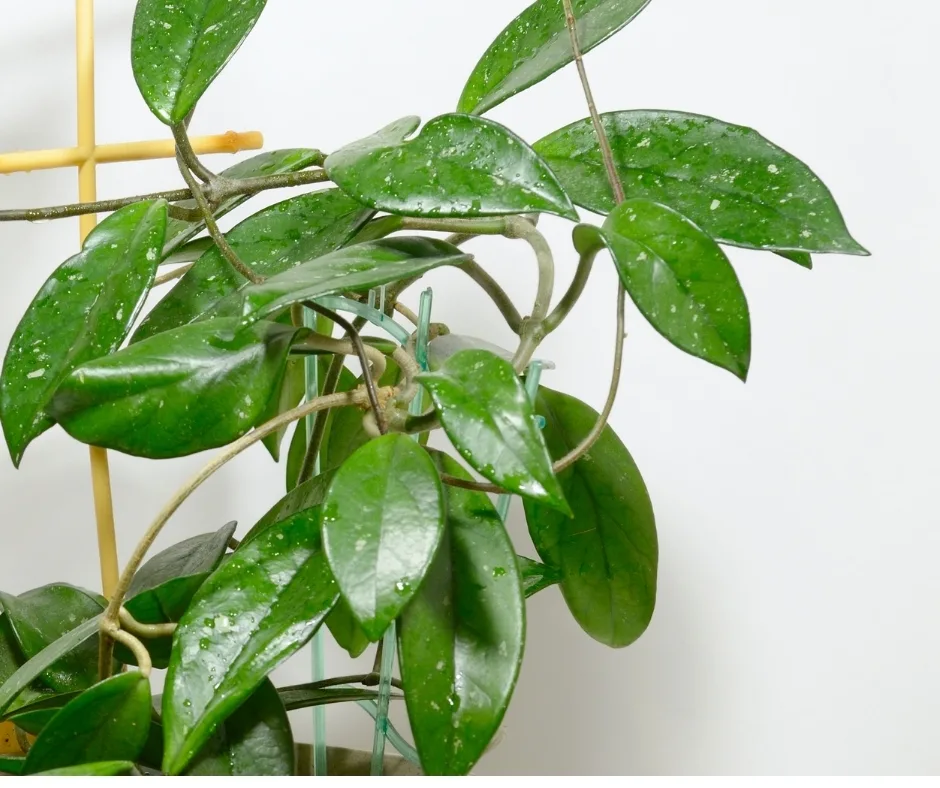
Hoya Wax Plant Flowers:
Hoya porcelain plant flowers beautifully. You will love the honey sweet scent.
Things to know about flowering.
- This plant grows flowers on umbels in clusters. The flowers are star shaped, small and fuzzy. They can vary in color but the flower cluster pictured below is typical for the Bella.
- Expect flowers on your Bella from May to September if it has the correct growing conditions.
- If your plant is not flowering move it to better light and fertilize it if it is otherwise healthy.
- One more thing. The Bella flowers on spurs. These are permanent features of your plant. Do NOT cut off the spurs. You will eliminate the flowering bodies on your Hoya.
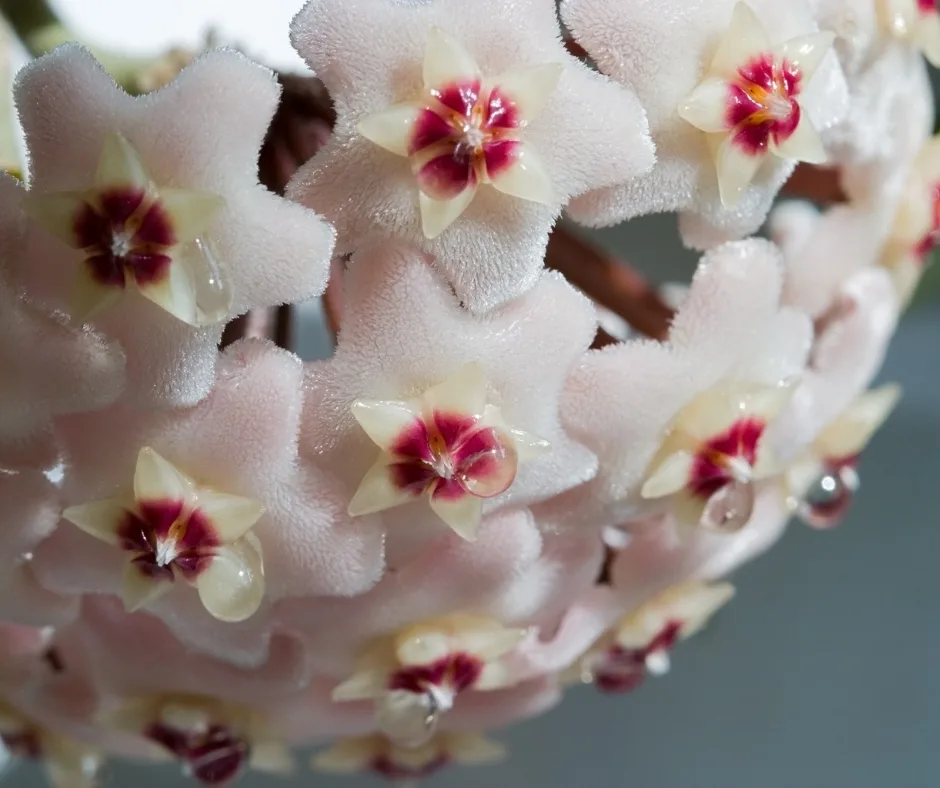
Notice the nectar dripping off the flowers. This is normal. Don’t let it concern you.
Hoya plants are Non toxic:
Hoya plants are Non Toxic to humans and pets. You can find them on California State non toxic plant list and the ASPCA.
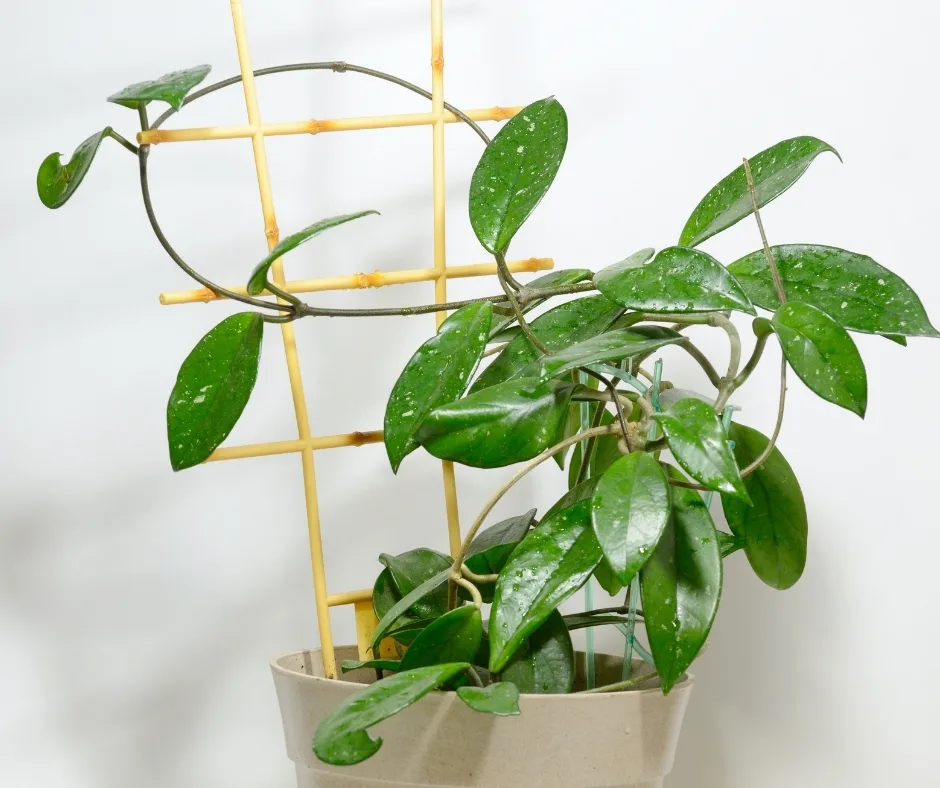
Hoya Bella is an air Filtering Plant:
This recent study by the University Of Georgia confirms the Hoya cornosa removes indoor pollutants and produces oxygen quite well in your home.
Plants like the Hoyas are increasingly being seen by the scientific community to reduce toxins in our homes.
Hoya Bella Care Guide
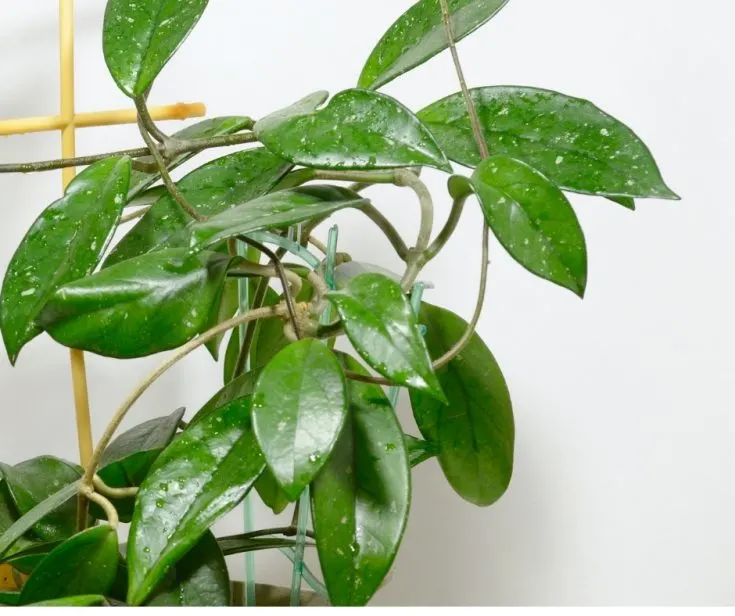
Hoya carnosa plants are slightly succulent vines with thick stems and waxy leaves. These are flowering vines with a sweet honey smell.
These vines enjoy trailing and can also be trellised. They grow to about four feet long.
This Hoya vine is susceptible to root rot. Pay particular attention to the watering and lighting needs of this plant.
Tools
Instructions
Soil Preference:
- This plant requires a light well draining soil mix. Hoyas cannot tolerate water logged soil compacted around the roots.
- A mix of potting soil, succulent soil mix and orchid soil mix (look for one with a lot of peat and finer bark mix) will keep the roots happiest.
- We use two parts potting soil to two parts succulent mix to two parts orchid bark. You can also use sand instead of bark if that is what you have.
- A heavy soil potting mix is not recommended for this plant.
- Due to this senstivity to over watering LECA growing is recommended. See our LECA Post series here.
Pot Size and Type:
- This plant needs a pot only an inch or two above the previous pot size. Chooosing too large a pot can encourage root rot.
- This Hoya will tolerate being root bound better than a roomy pot with too much soil. That will encourage wet conditions around the roots.
- Porous pots will work well for the Hoya. Terra cotta wicks away excess water from the soil. These plants enjoy a pot that breathes and keeps their feet dry.
- Repot every second year or when roots come out the drainage holes on the pot bottom.
Lighting:
- The Hoya Bella requires strong indirect light. It also appreciates direct light from a south or west facing window for four to hours a day. Just watch high heat conditions.
- Shield this plant from strong direct light in summer south and west sunny windows. The leaves can burn intense heat and light.
- Tips: Window sheers or blinds can offset longer periods of high direct light.
- In darker winter months the plant will most likely go dormant. If it appears to need more light you may find an indoor grow light helpful in darker climates.
Watering:
Hoyas are VERY easy to overwater.
- Try a watering schedule of every week. Water thoroughly until the water runs out of the pot.
- Watering is best done on a regular schedule so the plant is not over or under watered. Both can cause stress on the plant.
- Never let this plant get wet feet. Hoya Bella needs to dry out between waterings. But the roots need hydrating. for this reason I use a moisture meter and water when the root zone is almost or lightly in the dry zone.
- They cannot tolerate heavy compacted wet soil. If the soil is compacted the bottom of the soil can remain wet which encourages root rot and fungus gnats.
- Hoya roots need a lot of oxygen and will tolerate drier conditions.
- These plants are good candiates for growing in semihydroponics like LECA.
Humidity:
- Hoyas need humidity of 60 to 70% or more to be happy.
- TIPS: Set the container on a pebble tray with water under the pot or provide a humidifier to this tropical plant for best growth and happiness.
- Make sure you are not keeping your plant next to a heat or air vent. This will dramatically lower the humidity level.
- humidity also improves when you group plants together more closely.
- If the leaf tips go yellow or the leaves curl under on the edges. suspect humidity is too low.
How to Fertilize:
- Hoyas require regular fertilizing.
- Apply a good quality fertilizer (linked in materials) monthly through Spring and summer.
- Alternately you can use a slow release fertilizer at the beginning of the growing season.
- Decrease feedings by late Fall and allow the plant to rest through the winter months.
Temperature:
- Keep this plant at a low of 50 Degrees F. to upward of 85 Degrees F. It enjoys warmth and humidity.
Hoya Flowers:
Hoya porcelain plant flowers beautifully. You will love the honey sweet scent.
Things to know about flowering.
- This plant grows flowers on umbels in clusters. The flowers are star shaped, small and fuzzy. They can vary in color but the flower cluster pictured below is typical for the Bella.
- Expect flowers on your Bella from May to September if it has the correct growing conditions.
- If your plant is not flowering move it to better light and fertilize it if it is otherwise healthy.
- One more thing. The Bella flowers on spurs. These are permanent features of your plant. Do NOT cut off the spurs. You will eliminate the flowering bodies on your Hoya.
- If you Notice nectar dripping off the flowers. This is normal. Don't let it concern you.
Pests:
- Hoyas can be attacked by pests. All sap suckers really enjoy the Hoya.
- Stress by longterm overwatering, poor light, extreme temperatures and soil conditions are contributors to plant stress..
- Spider mites, mealy bugs, scale, thrips and whitefly are the most common houseplant pests you will see.
- Learn How to get rid of aphids and other pests with our homemade pesticide soap recipe with neems oil.
- To minimize the possibility of pests be sure to check all nursery plants before bringing them home.
- Quarantine all new plants until you are sure no pests live in them.
How to Propagate:
- This plant is easily propagated through stem cuttings or air layering..
- Start with a healthy lenght of vine from your Hoya plant.
- Cut in the internodal zone. We show you how in the Pothos Propagation post.
Toxicity:
1. This plant is NON toxic.
2. Hoya Plants Filter toxins out of the air in your home or office.
More lovely Vines for Your Home:
All these plants have bright beautiful foliage. These are easy care plants.
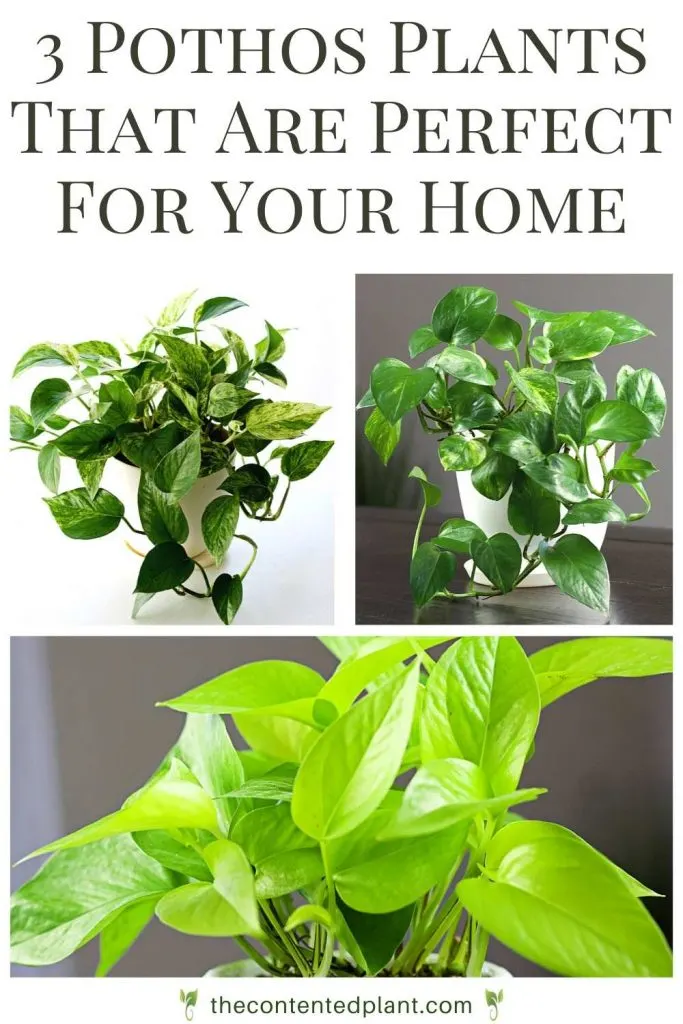
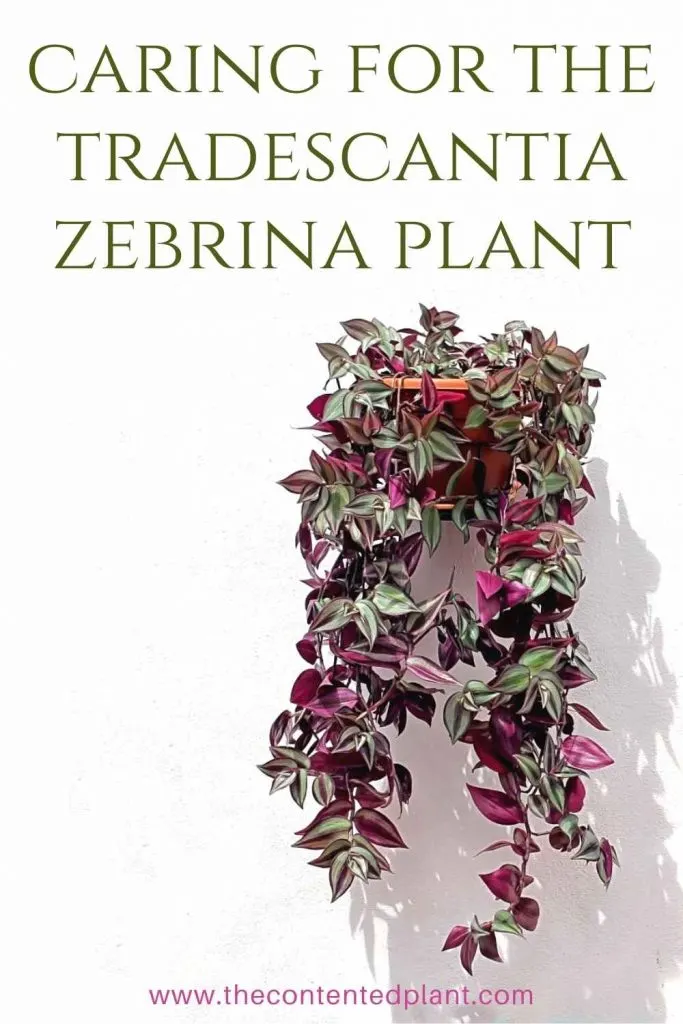
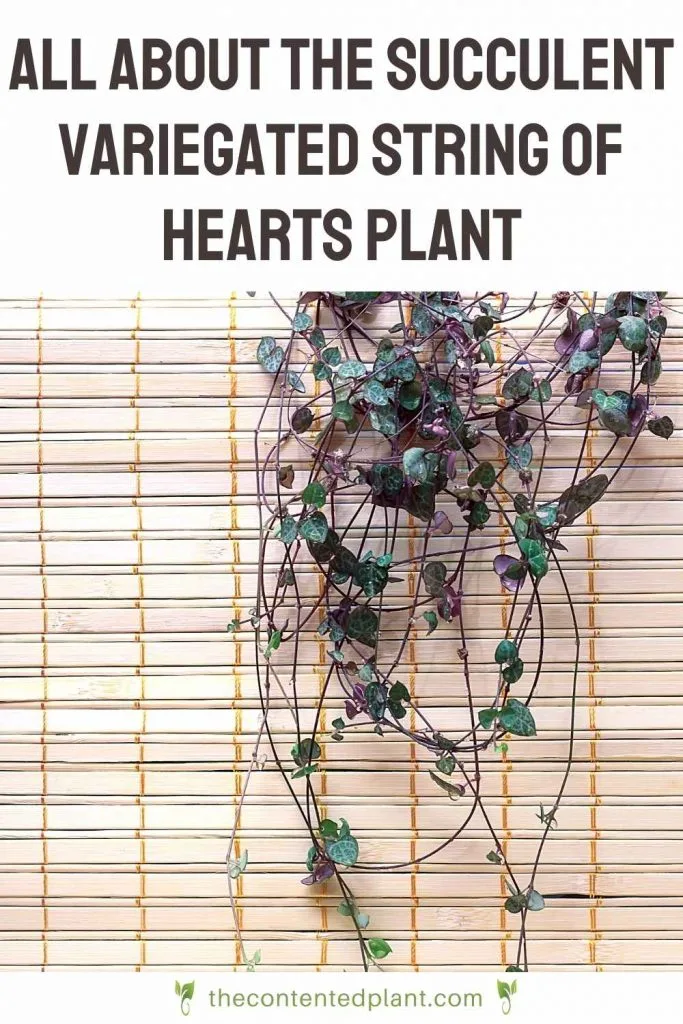
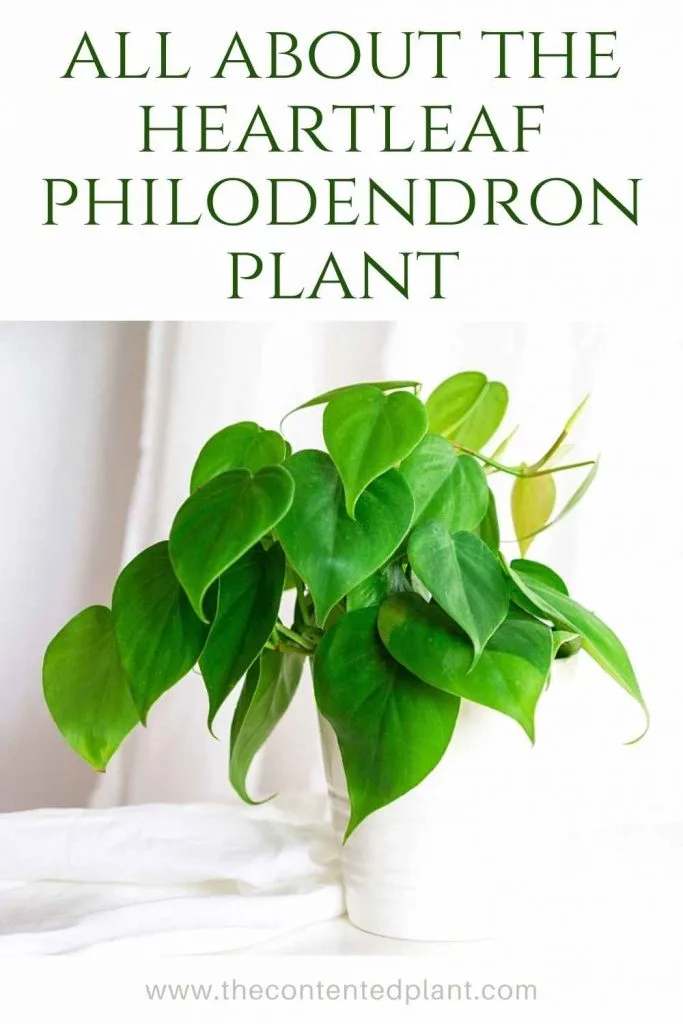
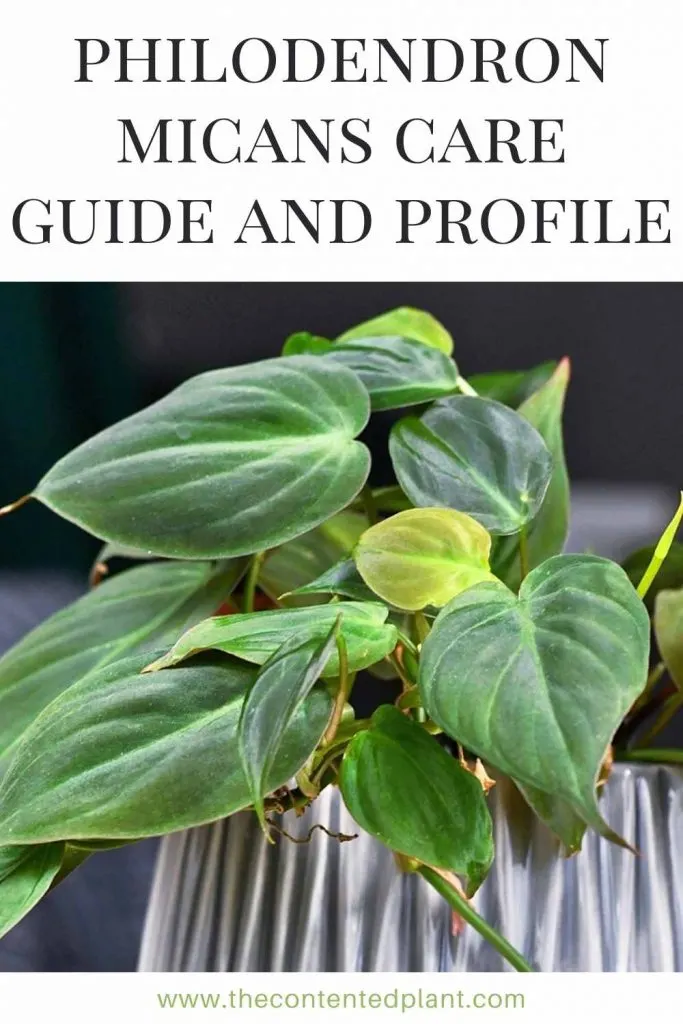
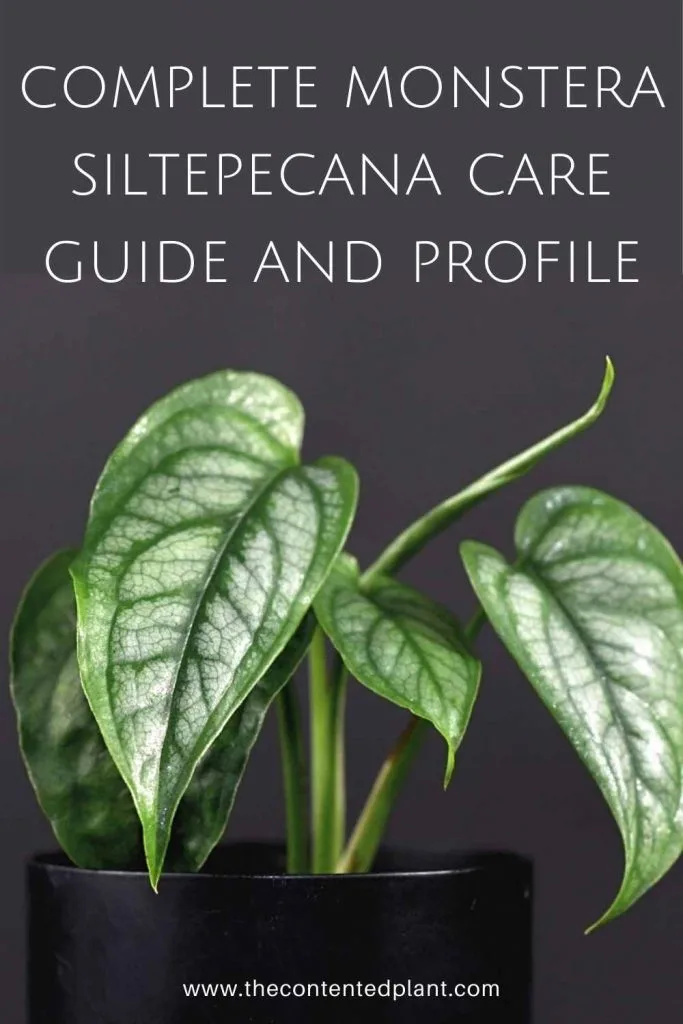
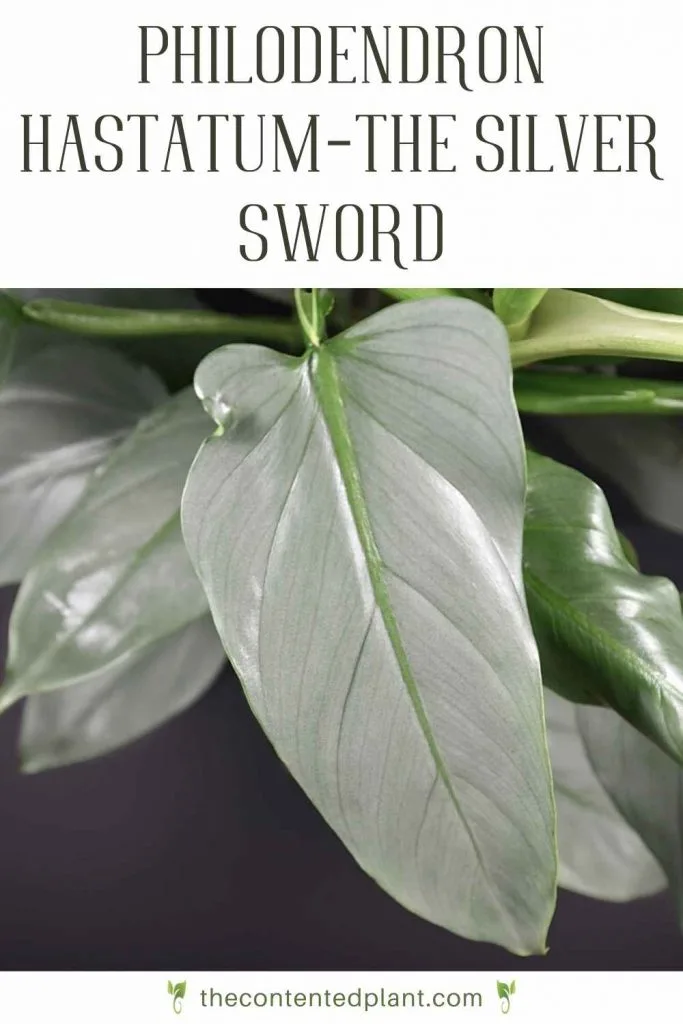
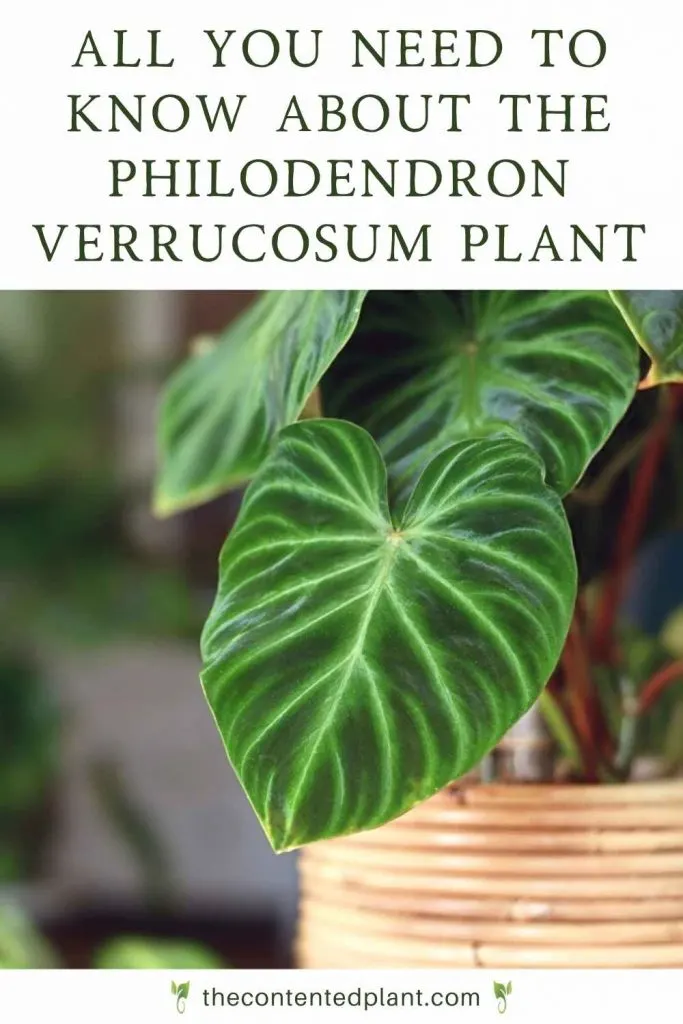
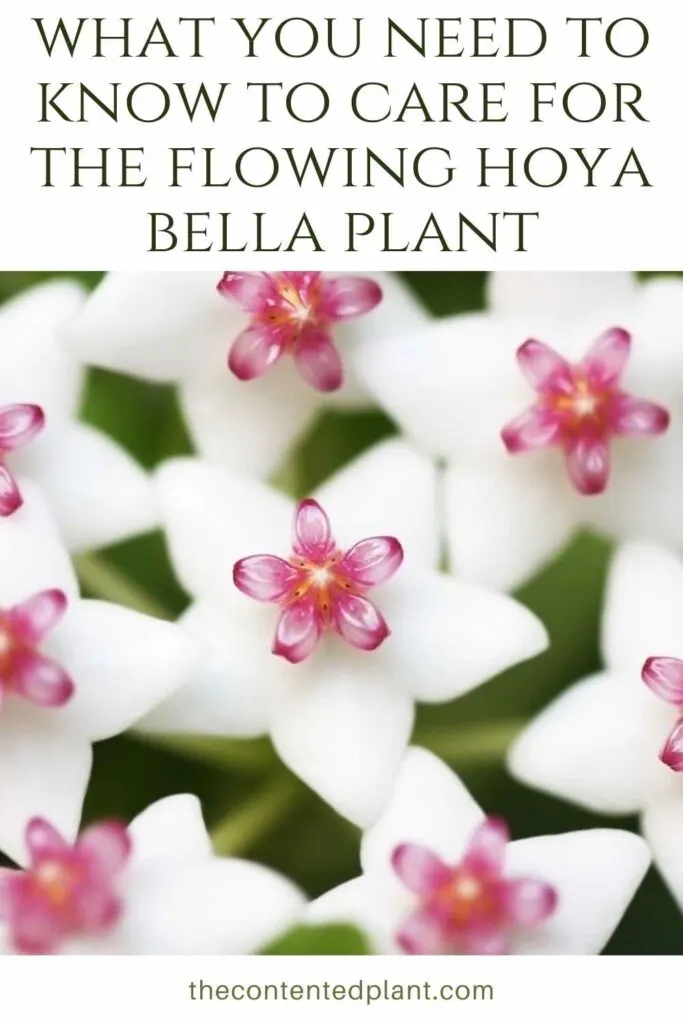
Related Content:
Follow Us:
Find us on YouTube, Instagram , Pinterest and TikTok! We love to Plant chat. We also comment, like and occasionally share your content to our daily stories. We’d love to see your plants. Share your joy in your houseplants. Happy Planting!

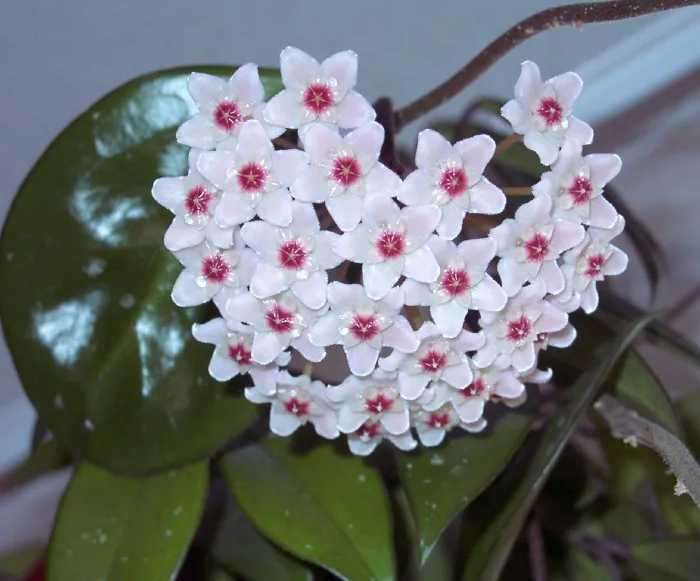
String of Hearts Care Guide - The Contented Plant
Wednesday 28th of December 2022
[…] Hoya Bella is also a flowering vine. Unlike the String go hearts the Bella has large clusters of tiny star shaped flowers. Very […]
Hoya Pubicalyx Care Guide and Plant Profile - The Contented Plant
Tuesday 15th of February 2022
[…] Hoya Bella Plant Care Guide […]